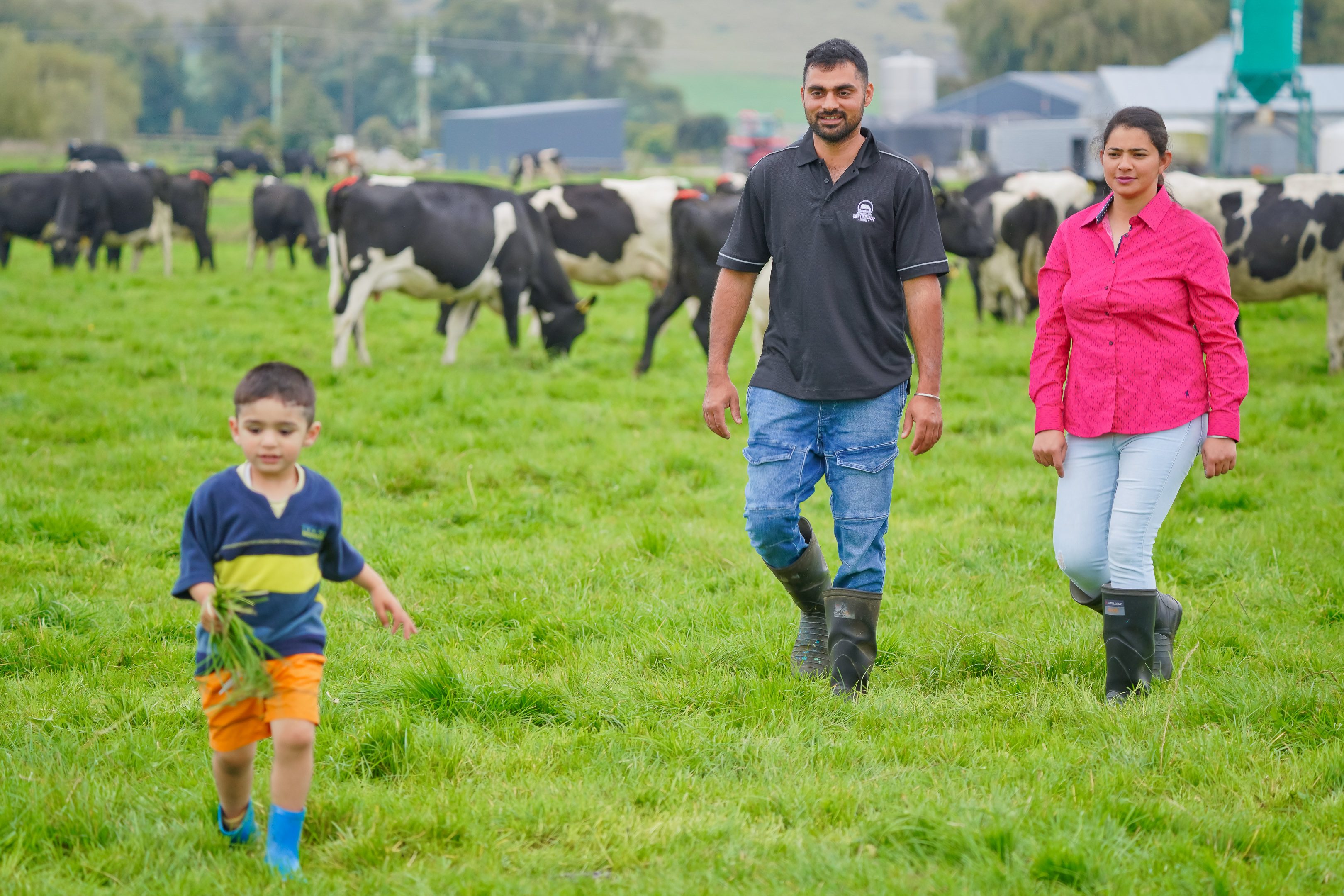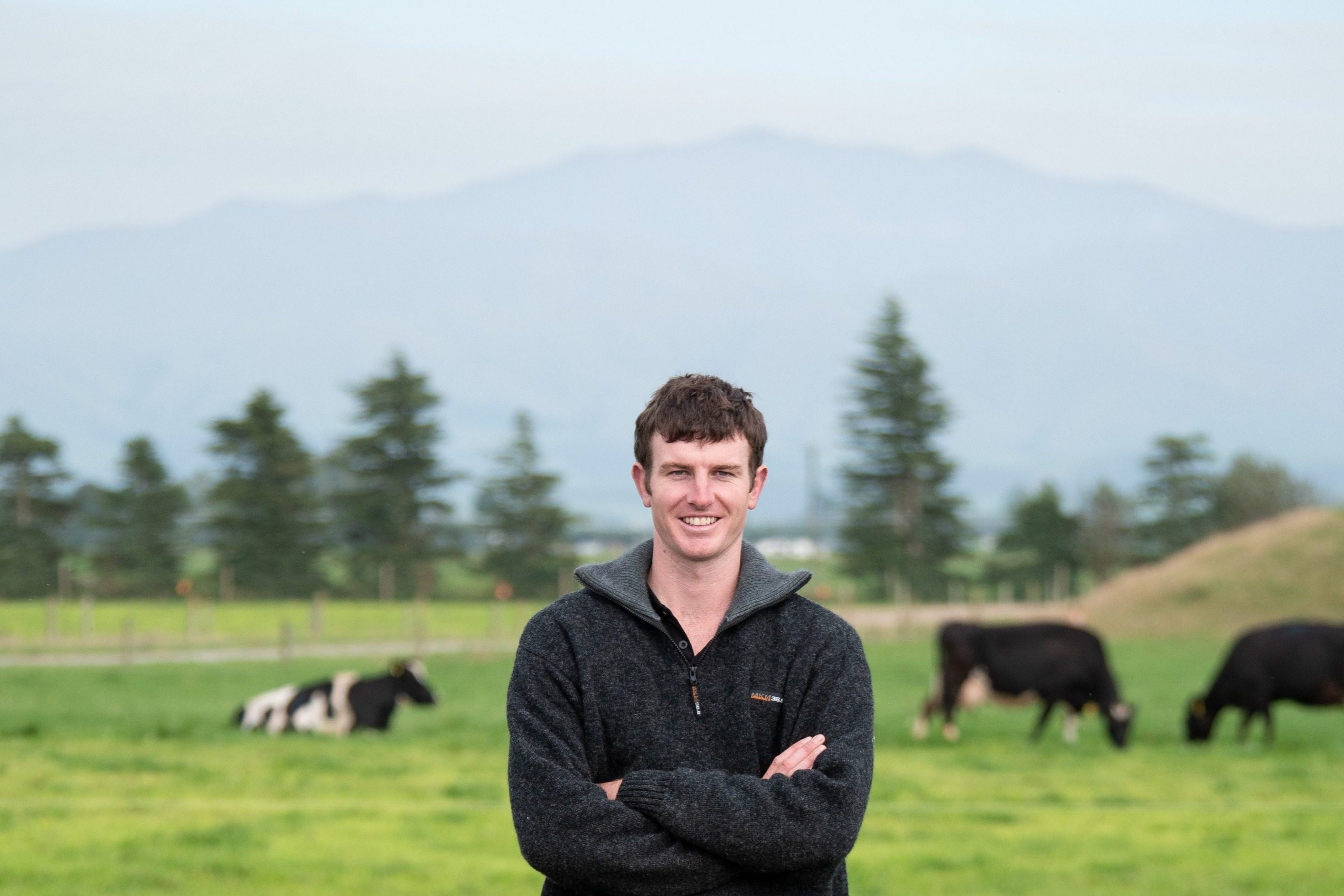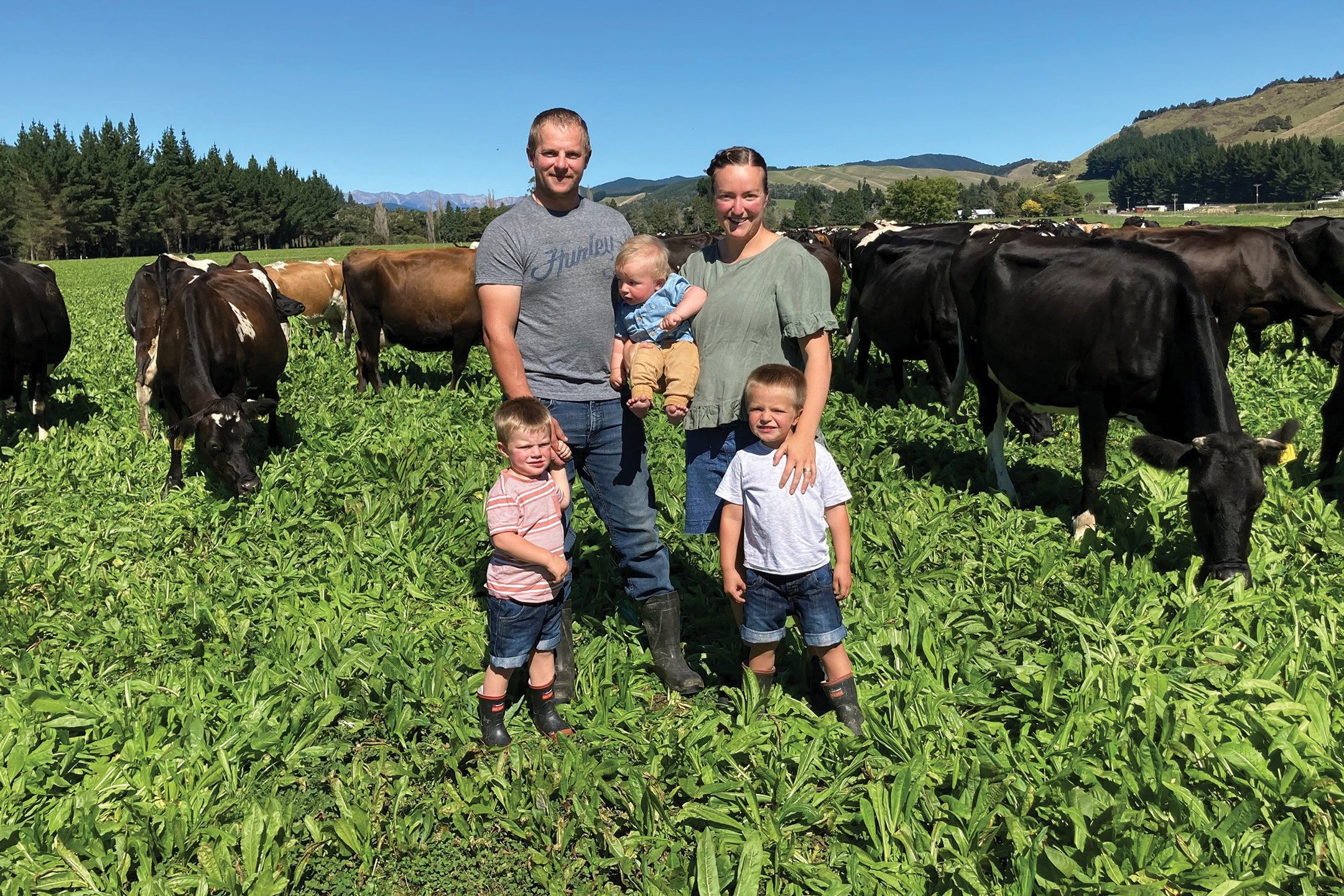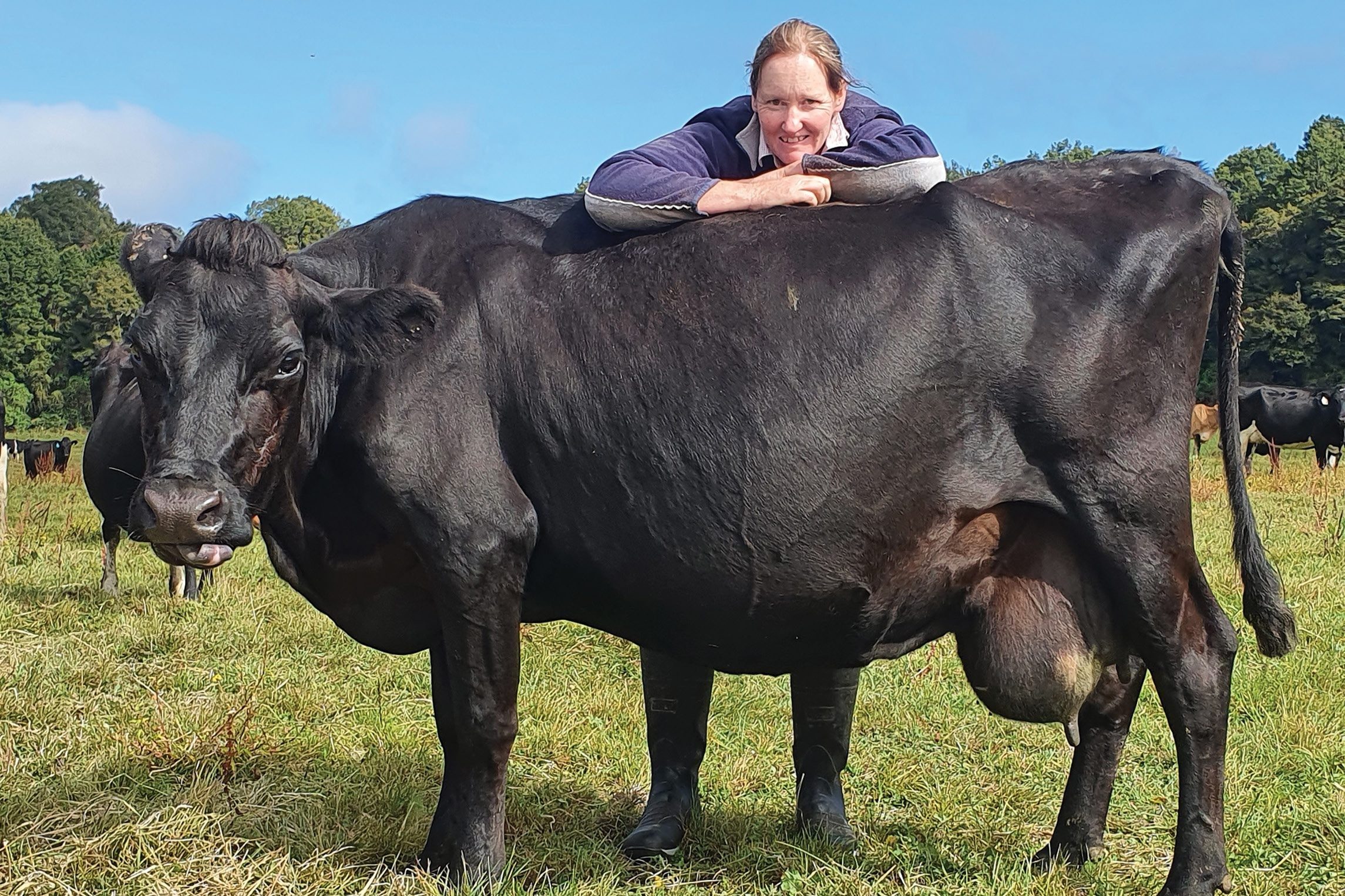By Karen Trebilcock
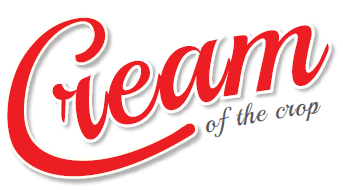 The grass is proving greener for 2022 Southland Otago Share Farmer winners Hamish and Emma Day in Southland.
The grass is proving greener for 2022 Southland Otago Share Farmer winners Hamish and Emma Day in Southland.
City boy Hamish and Emma, whose parents once owned a Taranaki dairy farm, moved south and haven’t looked back.
After lower-order sharemilking, and then a stint contract milking for five years near Riverton, the two 36-year-olds moved to the 220-hectare Mabel Bush property on June 1 last year wanting another challenge.
“It was the same number of cows, but there was better infrastructure here and we could see ourselves going further in the industry being here,” Hamish says.
A plus, the owners Peter and Maria Clinton are dairy farmers and know the industry well.
“Peter is really good to use as a sounding board for ideas. He has a great knowledge in dairy farming and we can have a real discussion which is great.”
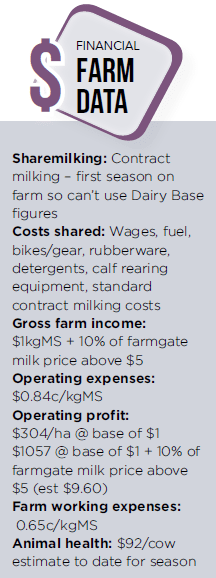 The 50-aside herringbone has Protrack, ACRs and walk-over teat spraying and they’re hoping to buy Allflex collars for next season.
The 50-aside herringbone has Protrack, ACRs and walk-over teat spraying and they’re hoping to buy Allflex collars for next season.
Although everything from wages to detergents are covered in the written contracts of contract milking, cow wearables are still to be figured out.
“They benefit us because it reduces labour at mating with tail painting and observing heats but they benefit the owners because they help with cow health. And we both benefit because we should produce more milk with them,” Emma says.
“So we’re keen to share the costs,” Hamish says.
About 800kg of grain/cow/year is allocated, a mix of palm kernel and maize DDG fed in the herringbone during milking, otherwise it’s all grass on the farm.
Of the 700-cow herd, 300 cows go into herd homes with late calvers milked as long as possible into the winter. The rest of the cows go to a 40ha runoff just down the road on grass and balage.
The no-crop system works well with transitioning feeding easier. The runoff is regrassed regularly as 16ha comes out of tulip bulbs each autumn.“
Horizon Tulips own the runoff and the tulips onfarm are just for bulb export, not the flowers and they have a six-year
rotation, one in tulips and then five years in grass so it works well with us.”
With 14 tonnes of grass harvested on the milking platform, which they want to increase to 15T, pasture management is all important.
Hamish walks the farm twice a week in spring, working out when to start pre or post-graze mowing, which paddocks can be taken out of the round for silage or balage, or regrassing. They aim to make 300 bales each year and buy 400T of silage to use for wintering and spring in the herd home onfarm. Also they made another 1200 bales off the runoff block for their grass-based wintering.
With Hamish on his pasture walks are his five pig dogs. Not used for getting the cows in for milking, the dogs are still great company and, with Hamish president of the Southern Pig Hunting Club, provide some off-farm fun as well.
New pastures include a mix of plantain and clover at 2kg per/ha, plus a mix of diploids and tetraploids are used. Half of the farm is Waikiwi soils with the rest the wetter Woodland soils.
Well, usually wetter. The prolonged summer and now autumn dry is starting to become worrying, especially as cull cows are going to the works in only twos and threes due to chain restrictions.
At the end of March, Emma and Hamish still had 50 to go and the farms’ cover, usually around 2200kg drymatter (DM)/ha is down at 1800kg DM/ha.
 “Southland farmers usually just get on with things, whatever happens, but deep down everyone is very stressed,” Hamish says.
“Southland farmers usually just get on with things, whatever happens, but deep down everyone is very stressed,” Hamish says.
A flourish of phones around the table show the forecast rain for the next day has vanished and even the rain promised for the end of the week looks dodgy.
“After the last herd testing we drafted our top 60% of milkers into one herd and we’re priority feeding them and hopefully that will help us get through.
“Our target was 370,000kg milksolids (MS) for the season but it’s looking more like 365,000kg MS now.”
AI is for six weeks followed by the bulls getting their chance for four weeks before they are kicked out for a week of short gestation semen. The bottom 10% of cows go to AI beef with Speckle Park, to be sold as four-day-old calves, the flavour of last season.
They aim for a F10 to F12 cow using LIC Forward Pack Friesian and KiwiCross.
“We’re really trying to breed a high-producing, sound cow,” Hamish says.
With a background in insurance and investment, working for AMP Financial Services in Wellington, and establishing her own photography business, it’s Emma who does their GST, payroll and monthly accounts.
“It saves us a lot of money doing it ourselves but we have Sarah Hopkins at McIntyre Dick in Invercargill doing our year-end accounts and she is always there when we need her,” Emma says.
“And we also use Ashley Burdon at McIntyre Dick, too, for analysing and benchmarking our business.
“He’s a great sounding board.
“We’re always aiming every year to do 10% better on everything we benchmark.
“But when things don’t work we use it as a lesson. It’s never a negative. It’s the only way to grow when you’re uncomfortable.”
Their accounting team is also helping them look into the future.
This coming season they will also contract-milk another farm of a similar size for Peter and Maria and in five years’ time hope they will be ready for the next step.
Their focus was on 50:50 sharemilking but the purchase of two former state houses side by side in Lower Hutt has changed that.
“We needed an asset to put the money we were earning every year from contract milking into,” Emma says.
“We were going to put it in cows but instead we decided on property. We spent two years, put in five offers on different properties but we finally got there.”
Rented for now, the plan is to demolish the two houses and subdivide the properties. In five years, the project, plus their projected earnings from their contract milking business will be enough to either go large-scale 50:50 or buy a small dairy unit.
“We’ll just see what is the best option when we get there,” she says. The ultimate goal is ownership of a 600 to 800-cow dairy farm.
“Before going contract milking we were lower order but there were just too many variables – the payout and the amount of milk we could make. With contract milking there is just the one – the amount of milk we can make so we can rely on budgets and make them work.”
The new venture into property is not tugging Hamish back to his previous career as a builder in the capital city.
“It’s definitely just a side hustle. Our main focus is dairy farming.
“We used to get up a 4.30, 5am to beat the traffic to get to work in Wellington,” he says. “Now we roll out of bed at 5am to milk cows. It’s a lot better.”
And with Henry (3) and Frank (1), family time is now all important.
“They love outside – the tractor, the cows, everything.”
It’s Emma who introduced Hamish to dairying and some of her brothers and sisters are still in the industry.
“My parents sold their dairy farm in Taranaki when I was about 13 and retired. Dad, he’s no longer with us, and he would be so proud of us winning this. Mum was just so rapt.
“My brother has won a regional final in the past and he’s putting the pressure on us to go one further and win the big one!”



